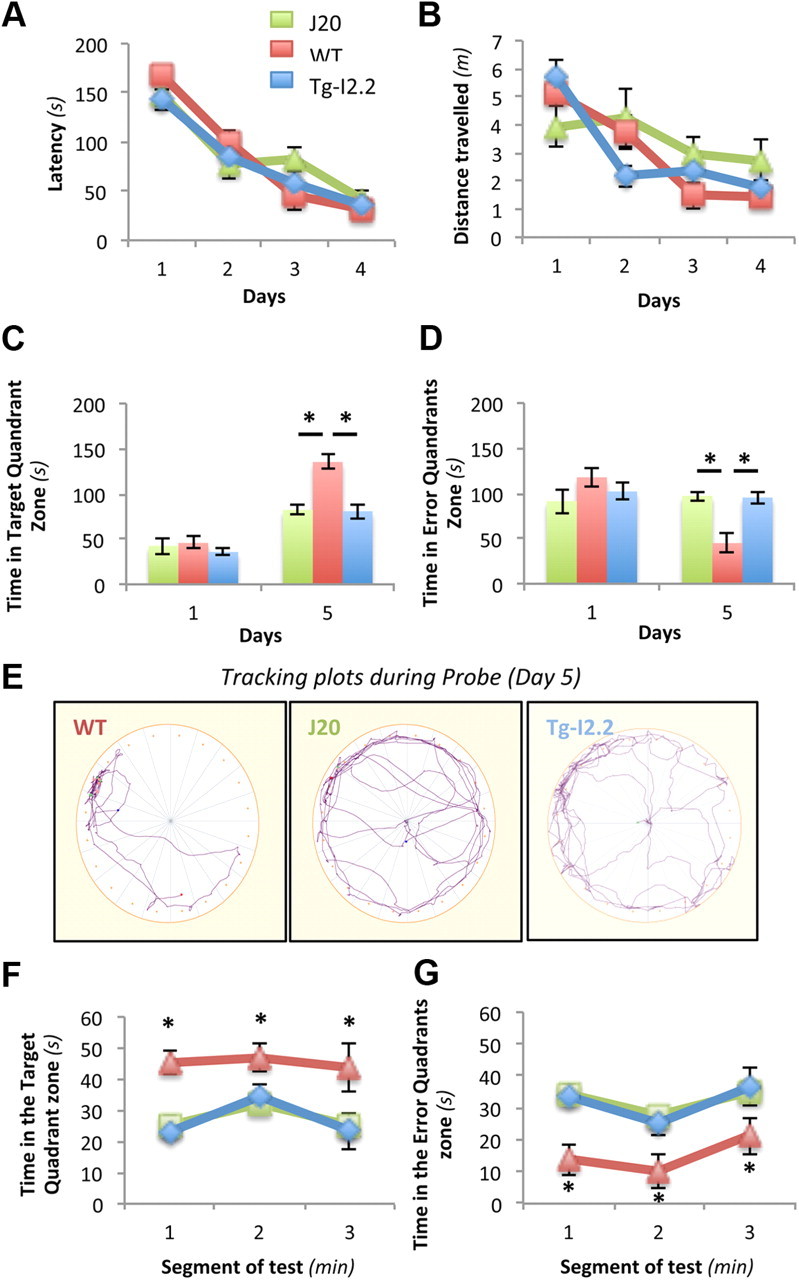Figure 4.

In the absence of pathology, overexpression of wild-type human αSyn causes memory deficits in the Barnes circular maze. Seven-month-old nontransgenic C57BL6, J20, and Tg-I2.2 mice (n = 4 mice per genotype) were trained in the Barnes circular maze for 4 d. A probe trial (escape platform removed) was conducted 24 h after the last training session. A, B, During acquisition of the task, latency (A) and distance traveled (B) were recorded. All three groups learned this task. Two-way repeated-measures ANOVA (RMANOVA) revealed a significant effect of training (F = 95.61; p = 0.0004) but no effect of transgene (F = 0.015; p = 0.9058) and no significant day × transgene interaction (F = 1.10; p = 0.3827). C–E, During the probe trial on day 5, wild-type mice, but not mice with hAPP or hαSyn, displayed a search bias for the target quadrant (C, D) and spent less time in nontarget quadrants (D, E). Two-way ANOVA of these data revealed a significant effect of hAPP (C, F(1,6) = 4.32, p = 0.038; E, F(1,6) = 4.68, p = 0.015) and hαSyn (C, F(1,6) = 14.34, p = 0.009; E, F(1,6) = 13.45, p = 0.010) and significant day × transgene interactions for both transgenic lines (C, FJ20(4,24) = 3.916, p = 0.013 and FI2.2(4,24) = 4.64, p = 0.041; E, FJ20(4,24) = 5.08, p = 0.004 and FI2.2(4,24) = 2.88, p = 0.044). F, G, Neither J20 nor TgI2.2 mice showed patterns of faster extinctions than nontransgenic animals during the 3 min of the probe trial, as indicated by the average time spent in the target quadrant or nontarget quadrants across 1 min intervals. Data represent mean ± SEM (n = 6 males per age per genotype; univariate RMANOVA test).
